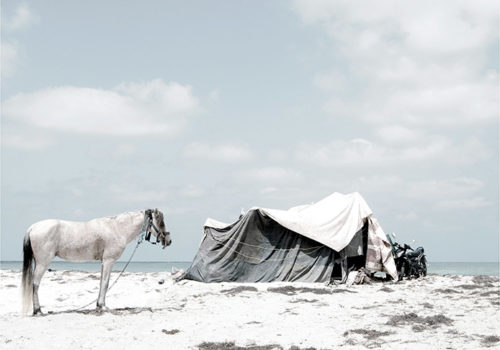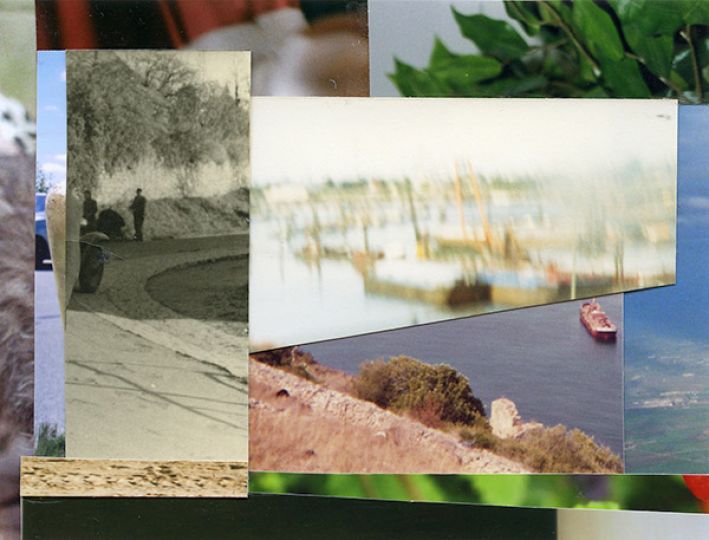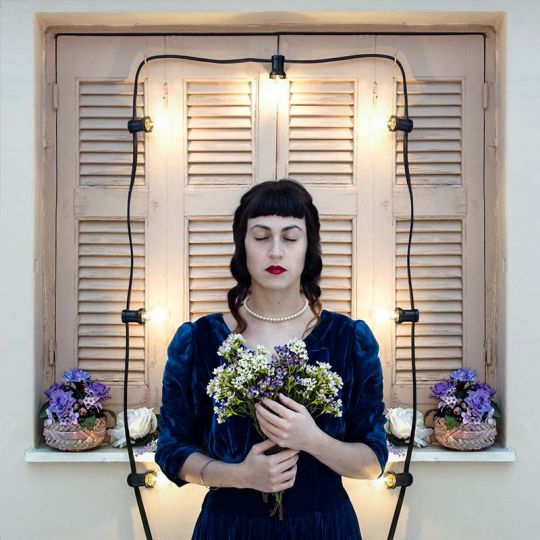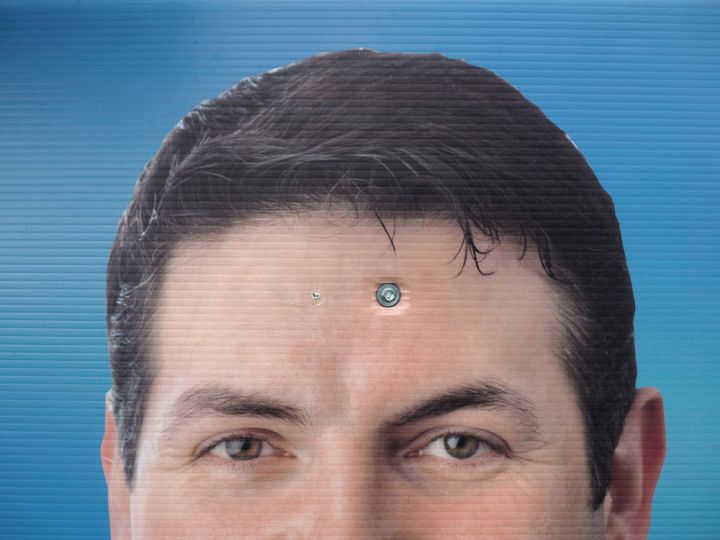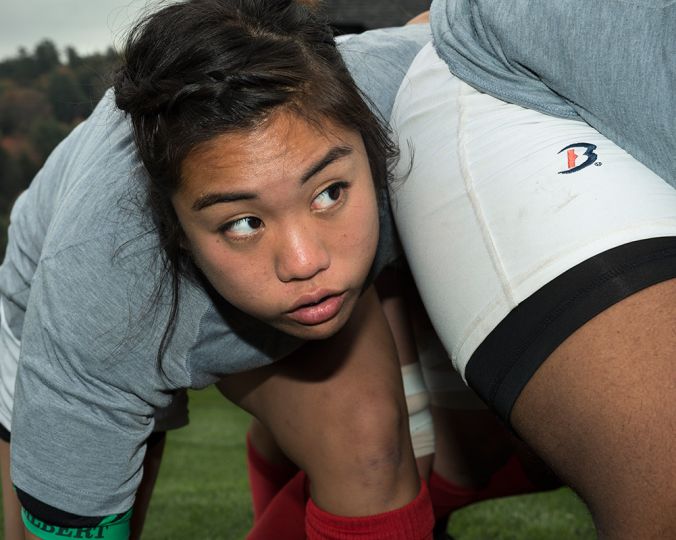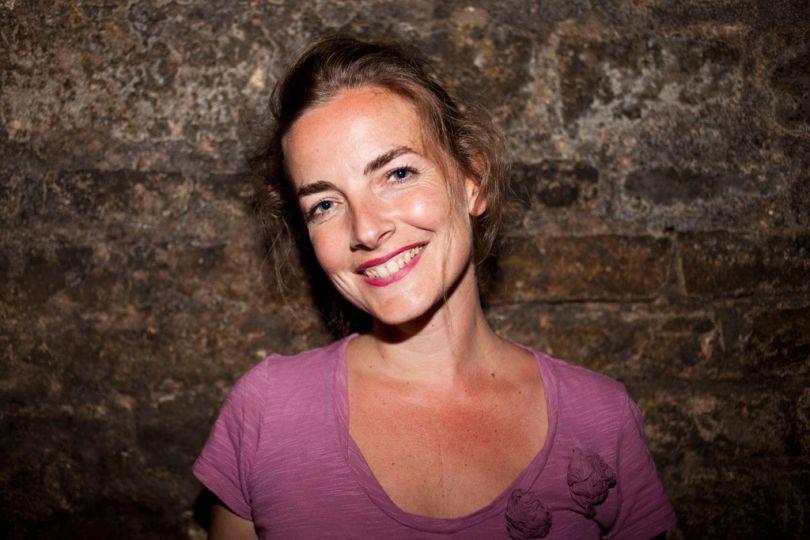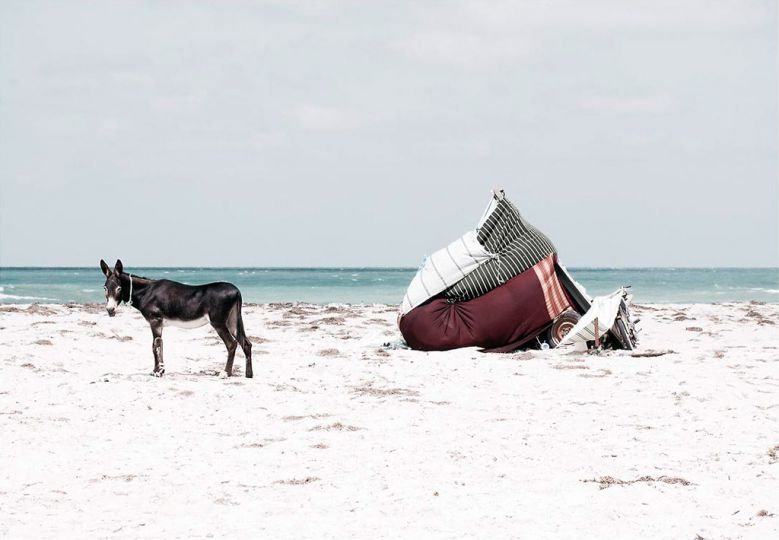Here is the interview with Yoann Cimier by Sophie Bernard in the context of our coverage of the festival Circulation(s). Strolling on Tunisian beaches during the summer, Yoann Cimier is fascinated by the ephemeral constructions created by Tunisians visiting the seaside. To him, it is not a trivial phenomenon : each constituent element of these short-lived camps is a revelation. Observing how the local population takes possession of the seaside for a day reflects the dynamics and diversity of Tunisian society.
What made you become a photographer?
It was most likely a default vocation. Photography offers the freedom to work with all subjects. It’s a diplomatic passport that unlocks the doors to unexplored worlds that one would have most likely never approached without the pretext of photography. What other profession can offer so many possibilities? Throughout secondary schooling, my teachers kept telling me that I was doing coursework tourism. My practice as a photographer is fairly consistent with this description. It just shows you must always listen to your teachers.
How, and what, did you first hear about the Circulation(s) Festival?
I have followed the development of the association Fétart—which is behind the Circulation(s) Festival—since it was created in 2005. I also took part in one of its early events at the Univer Gallery in Paris. Marion Hislen and her team have come a long way since then and have done some unparalleled groundbreaking work.
I would like the photographers featured in the festival to be able stretch their talents beyond the borders of their own countries, and find real career opportunities that would allow them to pursue their projects, often difficult to carry out and disseminate.
Could you tell us what your series is about and how you came to work on it?
I started the project in 2011 entirely by chance, while I was vacationing on the island of Djerba. My hotel room opened onto a large public beach, and I could see families come from afar with their carts, children, animals, mopeds … and set up their seaside camps composed of makeshift shelters that were both rudimentary and absolutely ingenious. I took my camera and spent two hours under blazing sunlight observing their progress and walking up and down the beach. These “nomadic” installations planted in the sand seemed to be there ready to be photographed. All I had to do was to press the shutter release button.
I quickly became aware of the architectural qualities and the poetic atmosphere of these minimalist tents with their colorful, windblown canopies, all alike and each unique at the same time. In the end, the subject came to me quite naturally: these shacks were like found objects, akin to the surrealist ready-mades. I started collecting them.
The project’s details were gradually fleshed out as I discovered in my research many possible readings of the subject: architectural, ethnographic, sociological… But from a strictly aesthetic point of view, I was determined to find beauty where others saw ugliness in their desire to point fingers at the more disturbing aspects of Tunisian society. That anti-art associated with photography is also at the heart of my series.
Who are your role models or your references in photography or art history?
When I left France to become an expat in Tunisia, I shed the weight of influences. In France, culture is everywhere. But for a creative person, it can be overwhelming. Since I moved across the Mediterranean, my tastes have changed; I stopped being force-fed culture. I started photographing at random, without worrying about being productive, about generating a project, without any bias. I let myself be guided by chance.
Raymond Depardon’s Errance is among my classic photo books. The series Trying to Dance by J.H. Engström was also an important landmark. In 2004, the art library in Angers (where I’m from) acquired a few prints from that series. With an annual membership fee, you could borrow these works for an unlimited time. I had them out for six months! In other domains of art, I have been long fascinated by the cinema of Marco Ferreri (Dillinger Is Dead, Bye Bye Monkey) as well as the experimental cinema of Matthias Müller (in particular Vacancy created using archival images of Brasilia…) which strikes a rare balance between film and photography. In painting, I have been always amazed by the technique and style of Mati Klarwein. He is the archetype of a painter attuned to his time.
FESTIVAL
Festival Circulation(s) – Jeune Photographie Européenne
From March 26th to June 26th 2016
CENTQUATRE
5 rue Curial
75019 Paris
France
Closed on Monday
http://www.festival-circulations.com
http://www.yoanncimier.com

